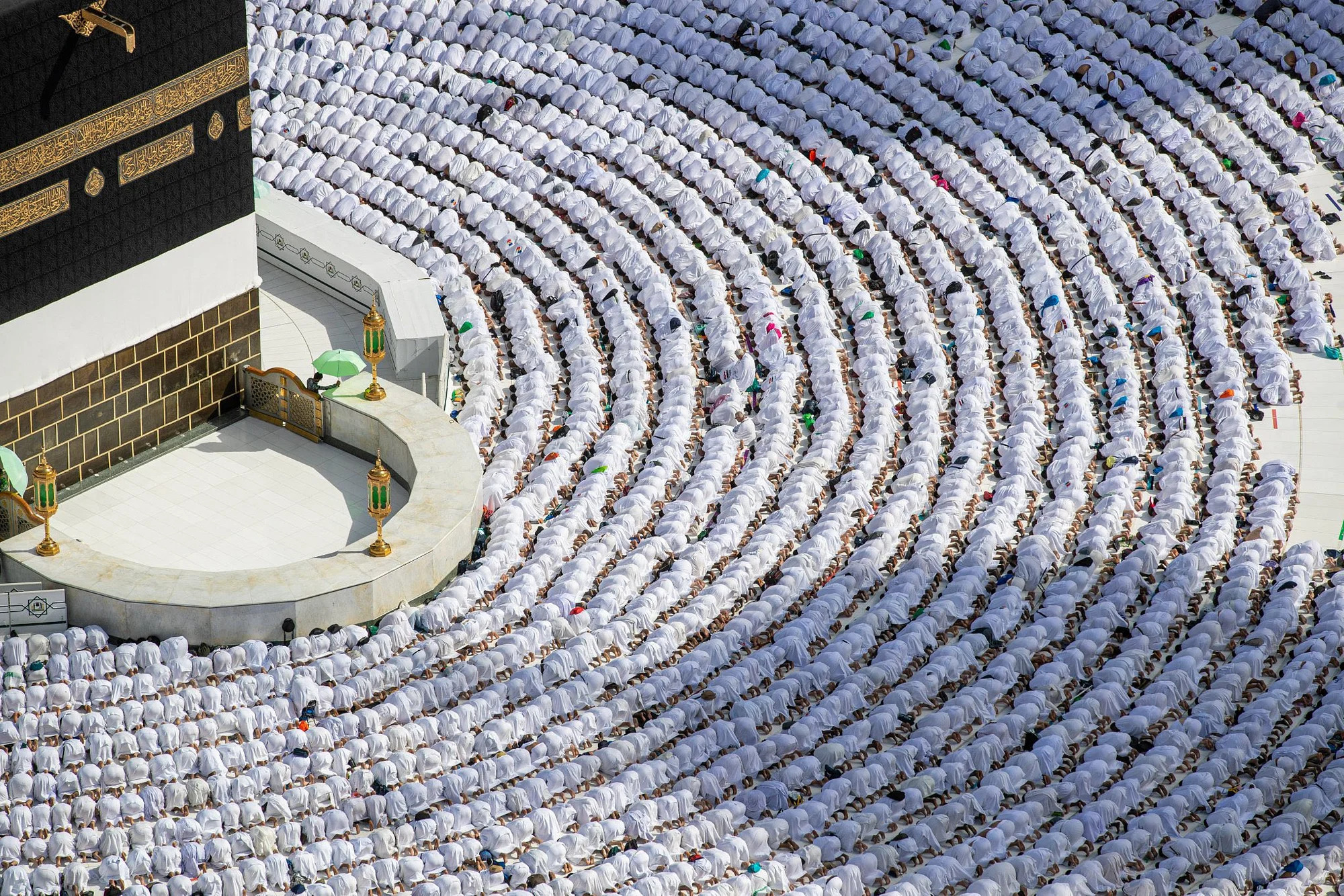Lifestyle
6.23.2023
Dates, travel, preparations, number of pilgrims… All you need to know about the 2023 Hajj

The Hajj, one of the world’s most important annual religious gatherings, begins on Monday June 26, 2023. This spiritual journey will then be marked by the day of Arafah on June 27 and then will be concluded with the celebration of Eid-ul-Adha in Saudi Arabia and throughout the Muslim world on Wednesday June 28.
However, the Hajj has no fixed annual date due to the lunar calendar used in Islam. The Islamic calendar follows the cycle of the lunar phase, which lasts approximately 29.5 days. As a result, Islamic months are shorter than those of the Gregorian calendar, which is based on the solar course. The Hajj takes place in the lunar month of Dhul Hijja, which is the last month of the Islamic calendar. However, as the Islamic months do not correspond exactly to the solar months, the precise date of the Hajj changes every year. The start of the month of Dhul Hijjah is determined according to the sighting of the new moon by Muslim religious authorities, so the date of Hajj fluctuates.
Voir cette publication sur Instagram
As Muslims around the world prepare to embark on this pilgrimage, several technological advances are transforming the experience and making it easier for the pilgrims.
How is the Hajj performed?
The Hajj is made up of several rituals. The first is Ihram, where pilgrims prepare for their day of spiritual purification by wearing special clothes, usually white sheets, symbolizing equality before God. Next, pilgrims head to the Kaaba, or House of Allah in Muslim theology, to perform the Tawaf, seven rotations around the Kaaba, reciting specific prayers. They then perform the Sa’i, covering the distance between the hills of Safa and Marwa seven times, in commemoration of Abraham’s wife Hajar’s search for water. The day of Arafat is the high point of the Hajj, when pilgrims gather on the plain of Arafat to pray and ask God for forgiveness. They then spend the night at Muzdalifah, where they collect stones for the “Stoning of Satan” ritual. Finally, they return to the Kaaba to perform the Tawaf al-Wadaa, the final farewell Tawaf, before concluding the Hajj.
Voir cette publication sur Instagram
Travel arrangements
The Hajj is now more than ever accessible to Muslims around the world, thanks to advances in travel and technology. Online platforms have also simplified the process, such as the Nusuk platform, which enables Muslims living in the West to obtain their visa online, making their journey to Saudi Arabia easier.
Improvements in transport services also contribute to pilgrims’ convenience, notably with the introduction of self-driving buses. These autonomous vehicles ensure travel between the holy sites of Mecca and Medina.
The Hajj and Visits Committee reported that a total of 744,862 people have already arrived in Medina to perform this year’s pilgrimage. Of these, around 587,845 are currently en route to or have reached Mecca, according to Arab News.
In total, the Hajj season of 2023 is expected to see around 2.6 million Muslims taking part in it.
Voir cette publication sur Instagram
A commitment to pilgrims’ safety
Health safety is a major concern during the Muslim pilgrimage. More than 2,200 medical professionals are on standby to provide immediate assistance in the event of an emergency. In addition, over 240 land and air ambulances are on standby under the aegis of the Saudi Red Crescent. In addition, the Saudi authorities have deployed over 14,000 employees and 8,000 volunteers to help and guide pilgrims.
popular

